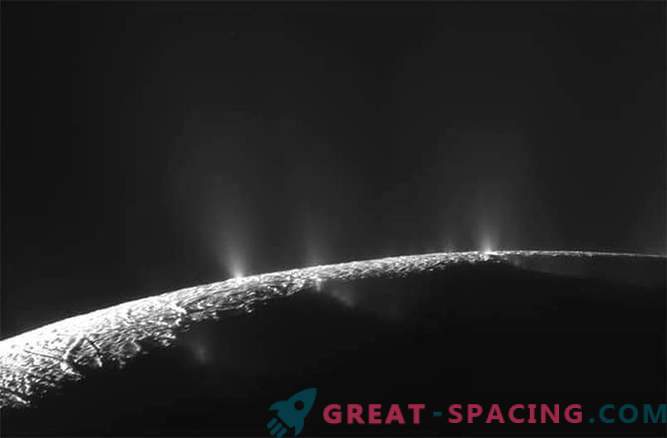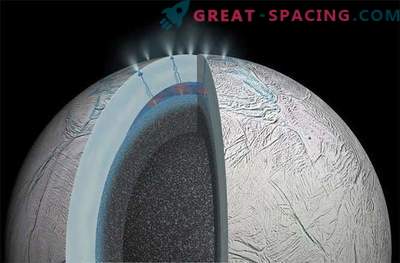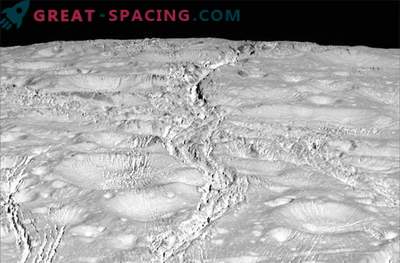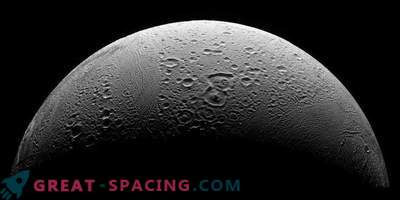
The Cassini apparatus, which has studied the Saturn system for 11 years, will fly 48 kilometers above Enceladus's south pole, which is 32 kilometers closer than all previous slopes into a train.
Scientists believe that the plume is formed from the fumes of the world's oceans, locked under the ice crust of Enceladus. It is assumed that the process of heating tidal waters led to the formation of the ocean. This fact also suggests that Enceladus can be inhabited.
Cassini does not have life detection equipment, but it is expected that such a low descent into the satellite’s surrounding cloud, which will occur on Wednesday around one o'clock in the morning, will provide the necessary information to scientists to determine if there is life on Enceladus.
For example, scientists are looking for something that can confirm the presence of hydrogen molecules in the train.
“The amount of hydrogen released will show the level of hydrothermal activity taking place ... and as a result, the amount of available energy; energy is the key ingredient in habitability, ”said Linda Spilker, a scientist from the Cassini project at the NASA jet engine laboratory in Pasadena. Scientists also want to better explore what is included in the plume, in addition to water vapor, ice particles and a variety of gas, including methane and carbon dioxide. They hope to get larger particles and a higher gas content in samples extracted from the plume layers close to the satellite surface.
“We can detect new organic substances that we have not previously encountered, or simply were not able to detect,” Spilker said.
The third goal of this descent is to collect information on the structure of the plume: is it formed from jets of steam breaking through cracks in the ice, or is it sprayed like a curtain along the entire length of cracks in the surface. This information will help scientists determine how long Enceladus has spewed water into space.
The flight will take place at a speed of 30577 kilometers per hour and will last only a split second, but scientists are convinced that the drops of water that Cassini will collect will be enough to shed light on some of the secrets of Enceladus.
“This is a very big step in the new era of exploring the water worlds of our solar system ... space bodies with the potential to become oases of life,” said Kurt Niebuhr, a leading Cassini scientist. The Cassini office will end its flight in 2017. It is planned that he will make the last dive into the train of Enceladus in December.
On Tuesday, the results of laboratory studies of gases, similar in composition to those found in Enceladus plume, were published. In the issue of the journal Nature Communications, published this week, the scientists reported that they were able to create a liquid in conditions close to those of Enceladus. The results of the experiments say that the same minerals that were found on Enceladus, previously met on primitive meteorites, which indicates that Enceladus could have been formed at the dawn of the history of the solar system.
Laboratory tests show that Enceladus can also produce hydrogen, “which can provide energy for possible life under the satellite’s surface,” as stated in the conclusion of the study.











































